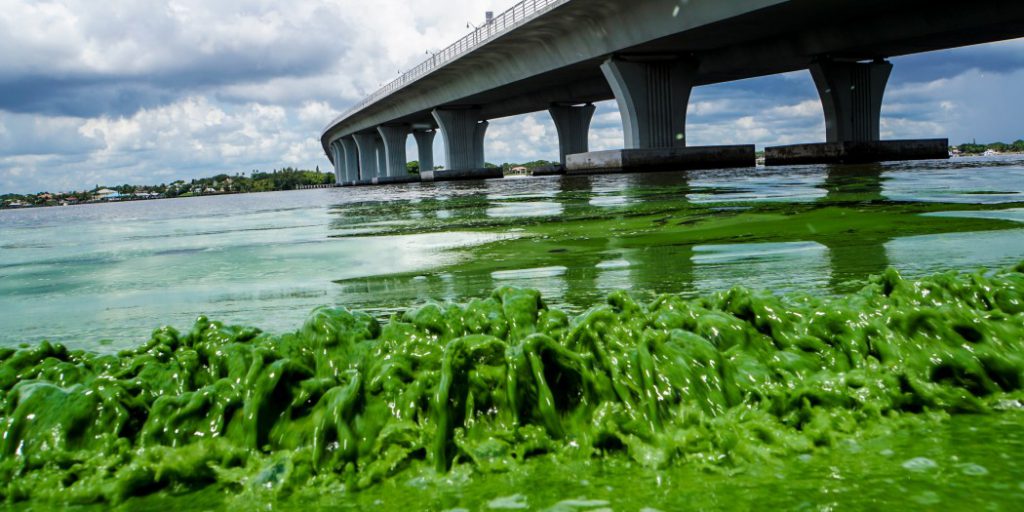A massive bloom of blue-green algae has hit four counties in Florida covering beaches along the Atlantic coast with foul-smelling, thick muck.
Discharge from Lake Okeechobee is to blame for the toxic blooms that are ruining aquatic environments, devastating businesses and potentially causing health problems for the people and animals who come in contact with it. As a result, Governor Rick Scott has declared a state of emergency in Lee, Martin, Palm Beach and St. Lucie counties.
FIU marine scientist Jose M. Eirin-Lopez, biologist Miroslav Gantar and chemist Kathleen Rein offer insight.
- Algae are a key component of aquatic ecosystems. Algae are a diverse group of organisms found all over the world that range from microscopic algae to giant seaweeds. As the basis of the food chain, algae help support the life forms that are above them on the chain. Algae can also produce oxygen and help remove carbon dioxide from the atmosphere.
- Blue-green algae are a type of bacteria that can produce toxins. Blue-green algae, or cyanobacteria, are a type of bacteria that relies on sunlight to grow. It can thrive in both freshwater and seawater ecosystems, as well as on land in moist soils and rocks and on the fur of sloths. Some, but not all, blue-green algae can produce toxins that cause environmental problems and affect public health. According to Rein, cyanobacterial toxins can be grouped into three categories according to their effects. These include neurotoxins, which act on the nervous system, hepatptoxins, which effect the liver, and dermatotoxins, which can cause a rash.
- Blue-green algae aren’t necessarily bad, but blooms are. In normal conditions, the toxic compounds produced by blue-green algae are not really harmful since they are generally found in low concentrations, according to Eirin-Lopez. However, blue-green algae toxins become an issue when the algae rapidly accumulate in an environment, a phenomenon known as an algal bloom.
- Algal blooms are toxic to people and their pets. Coming into direct contact with toxic algae can cause people to experience nausea, vomiting, diarrhea and other digestive problems, according to Gantar. It can also cause dermatitis and hay fever-like symptoms. People should not drink, swim, touch or inhale water affected by blue-green algae, and they should not take their pets near these toxic waters.
- South Florida is ideal for blue-green algae. Lake Okeechobee has been loaded with excessive amounts of nitrogen and phosphorus from a variety of sources, including fertilization runoff from farms and urbanization. The nutrient-filled discharge from the lake, combined with year-round warm climate and diverse aquatic environments, offer ideal conditions for toxic algae to grow freely and without limits. The threat of growing blooms is made worse by rising sea levels washing nutrients out into the ocean.
Since people cannot influence the amount of sunlight or the natural cycles of the ocean that help algae grow, Eirin-Lopez says better management of agricultural operations and urban water disposal are needed to mitigate the proliferation of blooms.
“Harmful algal blooms have always existed and will always exist,” said Eirin-Lopez, a researcher in FIU’s Center for Aquatic Chemistry and the Environment. “An active stance is required by decision and policy makers to help alleviate this problem and educate South Florida’s citizens. We must set our eyes on prevention as the best measure to avoid intoxications and optimize industrial practices.”
The Center for Aquatic Chemistry and the Environment brings together researchers from the fields of chemistry, ecology, engineering and computing, and public health to improve the understanding of environmental contamination in water resources and design remediation strategies. Eirin-Lopez’s research focuses on the effects of natural and human-induced marine pollution, including algae and blue-green algae, on marine organisms.
via FIU News

